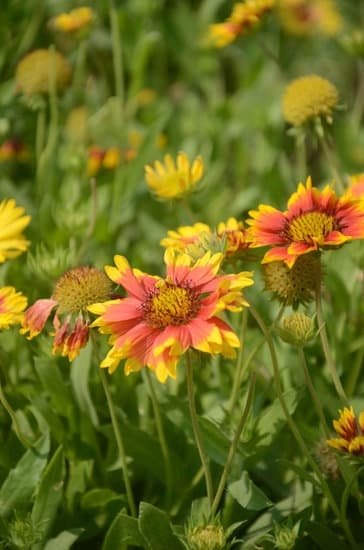Rose gardens are a timeless and classic addition to any landscape, adding an element of allure and romance. Incorporating the beauty of roses into your garden can create a stunning and fragrant oasis. Whether you’re a seasoned gardener or just starting out, there are countless rose garden ideas that can help you design and maintain a beautiful and thriving space.
When it comes to creating a breathtaking rose garden, the possibilities are endless. From choosing the perfect rose varieties to designing the layout, organization, and landscaping, there are numerous creative ideas to consider. Additionally, enhancing your rose garden with companion plants, decorative elements, and lighting can take your garden to the next level.
In this article, we will explore the beauty of rose gardens and discuss various tips for selecting the best roses, designing and maintaining your garden, as well as expert advice for preventing pests, diseases, and other common challenges. We will also delve into seasonal considerations for caring for your rose garden in different weather conditions.
Whether you’re looking to showcase your vibrant blooms or searching for inspiration to create your own captivating rose garden sanctuary, this article will provide valuable insights on how to achieve your desired results.
Choosing the Perfect Rose Varieties
When it comes to creating a stunning rose garden, one of the most important decisions you’ll make is selecting the perfect rose varieties. With so many options available, it can be overwhelming to choose the right roses for your garden. However, by considering a few key factors and following some expert tips, you can ensure that your rose garden will thrive and bloom beautifully.
Consider Your Climate and Growing Conditions
Before choosing which roses to plant in your garden, it’s crucial to consider the climate and growing conditions in your area. Some roses thrive in hot, dry climates, while others prefer cooler, more humid environments. Additionally, certain roses are more resistant to common diseases or pests. By researching which rose varieties are best suited for your specific climate and growing conditions, you can set yourself up for success from the start.
Think About Your Design and Color Preferences
Another important factor to consider when choosing rose varieties is your design preferences and desired color scheme for your garden. There are countless rose varieties available in an array of colors, sizes, and shapes. Whether you prefer classic red roses, delicate pink roses, or vibrant yellow roses, there’s a perfect variety out there for you. Consider how different rose varieties will complement each other and contribute to the overall aesthetic of your garden.
Consult With Local Experts
If you’re feeling overwhelmed by the process of choosing the perfect rose varieties for your garden, don’t hesitate to consult with local gardening experts or visit nearby nurseries. These professionals can provide valuable insight into which rose varieties are best suited for your area and offer personalized recommendations based on their experience and knowledge. By seeking guidance from experts in your community, you can feel confident that you’re making informed choices for your rose garden.
Designing Your Rose Garden
Designing a beautiful and well-organized rose garden can be a rewarding and fulfilling experience. From the layout to the landscaping, there are endless possibilities to create a stunning and functional rose garden that will be the envy of your neighbors. Here are some creative ideas to consider when designing your rose garden:
- Plan the layout: Before you start planting, take time to plan the layout of your rose garden. Consider factors such as sunlight, drainage, and accessibility. You may want to create pathways and seating areas within the garden to enjoy the beauty of your roses.
- Organize by color and variety: To create a visually appealing display, organize your roses by color and variety. Grouping similar colors together can create a striking visual impact, while organizing by variety can make it easier to care for each type of rose.
- Landscaping elements: In addition to roses, incorporate other landscaping elements such as shrubs, trees, or decorative rocks to add texture and interest to your rose garden. Consider adding a focal point, such as a trellis or fountain, to enhance the overall aesthetic.
When designing your rose garden, it’s important to strike a balance between aesthetic appeal and practicality. Consider these creative ideas for layout, organization, and landscaping when planning your own rose garden.
Whether you have a large backyard or a small balcony, there are endless opportunities to create a stunning rose garden that reflects your personal style and preferences. By incorporating these creative ideas into your design process, you can create a beautiful and functional space that brings joy all year round.
Maintaining Your Rose Garden
When it comes to maintaining a beautiful and healthy rose garden, proper watering, fertilizing, and pruning are essential. These practices not only promote the growth and blooming of your roses but also help prevent diseases and pest infestations. By following some best practices, you can ensure that your rose garden remains vibrant and thriving throughout the growing season.
Watering Your Roses
One of the most crucial aspects of maintaining a rose garden is providing the right amount of water. Roses generally require about an inch of water per week, either from rainfall or irrigation. Deep, infrequent watering is ideal to encourage strong root development.
It’s important to water your roses at the base to prevent moisture-related diseases such as powdery mildew. Additionally, using a soaker hose or drip irrigation system can help deliver water directly to the roots while keeping the foliage dry.
Fertilizing Your Roses
Fertilizing your roses is vital for promoting healthy growth and abundant blooms. Choose a slow-release, balanced fertilizer specifically formulated for roses and apply it in early spring when new growth begins. Repeat applications during the growing season based on package instructions. Be sure to follow recommended dosages to avoid over-fertilization, which can lead to excessive foliage at the expense of flowers.
Pruning Your Roses
Pruning plays a significant role in maintaining the shape, health, and vitality of your rose bushes. In early spring, remove any dead, damaged, or diseased canes and prune back any crossing branches to improve air circulation within the plant. After each flowering cycle or in late winter (depending on your climate), perform additional pruning by cutting back spent blooms and shaping the bush as needed.
Overall, by adhering to these best practices for watering, fertilizing, and pruning your roses will not only result in beautiful blooms but also contribute to robust plants that are more resistant to pests and diseases.
Enhancing Your Rose Garden
One of the best ways to elevate the beauty of your rose garden is by incorporating companion plants and decorative elements. When selecting companion plants, it’s important to choose ones that not only complement the roses aesthetically but also provide practical benefits such as repelling pests or improving soil quality. Some popular companion plants for roses include lavender, marigolds, and daisies.
In addition to companion plants, decorative elements can add a unique charm to your rose garden. Consider adding trellises for climbing roses, decorative stone pathways, or quaint garden sculptures. These elements can help create a whimsical and enchanting atmosphere in your garden.
Furthermore, lighting can be an essential aspect of enhancing your rose garden. Properly placed outdoor lights can not only showcase the beauty of your roses after sunset but also provide a safe and welcoming ambiance for evening strolls through the garden. Consider using solar-powered lights strategically placed among the roses or string fairy lights along pergolas or trellises for a magical effect.
| Companion Plant | Benefit |
|---|---|
| Lavender | Repels pests and attracts pollinators |
| Marigolds | Deters nematodes and other harmful insects |
| Daisies | Adds colorful contrast and attracts beneficial insects |
Rose Garden Care Tips
Rose gardens are a beautiful and elegant addition to any landscape. However, with their delicate petals and intricate foliage, maintaining a healthy and thriving rose garden can be challenging. In this section, we will provide expert advice on preventing pests, diseases, and other common challenges that gardeners may face when caring for their beloved roses.
One of the most common pests that can wreak havoc on a rose garden is aphids. These tiny insects feed on the sap of roses and can quickly multiply if left unchecked. To prevent an infestation, it’s important to regularly inspect your plants for any signs of aphids and take action as soon as they are detected. This may include using insecticidal soap or introducing natural predators such as ladybugs to the garden.
Another common challenge for rose gardeners is dealing with diseases such as powdery mildew and black spot. These fungal infections can cause unsightly blemishes on the leaves and flowers of roses if not properly addressed. To prevent these diseases from taking hold in your garden, it’s essential to practice good sanitation by removing any fallen leaves or debris from the garden bed, as well as providing adequate air circulation around the plants.
In addition to pests and diseases, rose gardeners must also be mindful of other common challenges such as drought stress, nutrient deficiencies, and extreme temperatures. By implementing proper watering practices, regularly fertilizing the soil, and providing some form of protection during harsh weather conditions, you can help ensure that your roses remain healthy and resilient in the face of these challenges.
| Common Challenge | Prevention Tips |
|---|---|
| Aphid Infestation | Regular inspection and use of insecticidal soap or natural predators |
| Fungal Diseases (powdery mildew, black spot) | Practice good sanitation and provide adequate air circulation |
| Drought Stress/Nutrient Deficiencies/Extreme Temperatures | Implement proper watering practices, regular fertilization, and provide protection during harsh weather conditions |
Seasonal Considerations
As the seasons change, so do the needs of your rose garden. Each season presents its own set of challenges and opportunities for caring for your roses and ensuring they continue to thrive.
In the spring, it’s important to start with a thorough clean-up of your rose garden. Remove any debris, prune dead or damaged branches, and apply a balanced fertilizer to give your roses a healthy start. This is also the time to plant new roses or transplant existing ones if needed.
As summer approaches and temperatures rise, it’s crucial to ensure that your roses receive enough water. Deep, infrequent watering is best to encourage strong root growth and prevent diseases. Mulching around the base of the plants can help retain moisture and regulate soil temperature.
Fall is a great time to give your rose garden some extra attention before winter sets in. Deadhead spent blooms to encourage new growth, and consider applying a layer of organic mulch to protect the roots from frost. This is also the time to consider planting bulbs or other companion plants that will complement your roses in the coming year.
Finally, as winter arrives, it’s important to prepare your rose garden for dormancy. Stop fertilizing several weeks before the first frost, but continue watering until the ground freezes. Consider using protective covers or wrapping for vulnerable varieties, especially in colder climates.
By paying attention to these seasonal considerations and adapting your care routine accordingly, you can ensure that your rose gardens ideas bloom beautifully throughout the year.
Showcasing Your Rose Garden
In conclusion, cultivating a beautiful rose garden is a labor of love that requires careful planning, maintenance, and creative vision. By exploring the allure and romance of rose gardens, selecting the perfect rose varieties, and designing the layout and landscaping, you can create a stunning display of natural beauty in your own backyard. Additionally, by enhancing your rose garden with companion plants, decorative elements, and lighting, you can elevate the ambiance and aesthetic appeal of your outdoor space.
Maintaining your rose garden is an ongoing endeavor that requires careful attention to watering, fertilizing, and pruning. By following expert advice for preventing pests, diseases, and other common challenges, you can ensure that your roses remain healthy and vibrant throughout the year. It’s also important to consider seasonal variations in caring for your rose garden to promote optimal growth and blooming.
Finally, showcasing the beauty of your rose garden allows you to share this labor of love with others. Whether it’s through hosting garden tours, participating in local horticultural events or simply enjoying quiet moments in your own little slice of paradise, there are endless ways to display and share the beauty of your rose gardens ideas with others.
Ultimately, a well-tended rose garden is not only a visual delight but also a source of pride for any gardener who has poured their heart into creating it.
Frequently Asked Questions
How Do You Layout a Rose Garden?
Layouting a rose garden involves careful planning of the location, size, and shape of the garden. Consider factors such as sunlight, soil drainage, and air circulation. Roses should be arranged in a way that allows easy access for maintenance and care.
What Is the Best Underplanting for Roses?
The best underplanting for roses includes low-growing perennials and annuals that can complement the beauty of the roses without competing for nutrients or water. Some suitable options are geraniums, catmint, and lavender.
What Is the Best Ground Cover Around Roses?
The best ground cover around roses should be low-maintenance and provide weed suppression while ensuring good air circulation around the base of the plants. Examples of suitable ground covers include creeping thyme, sedum, or even mulch to retain moisture and prevent weed growth.

Welcome to my gardening blog! I am passionate about plants and enjoy sharing my knowledge and experiences with others. In this blog, I will write about everything related to gardening, from tips on how to get started to updates on my own garden projects.





